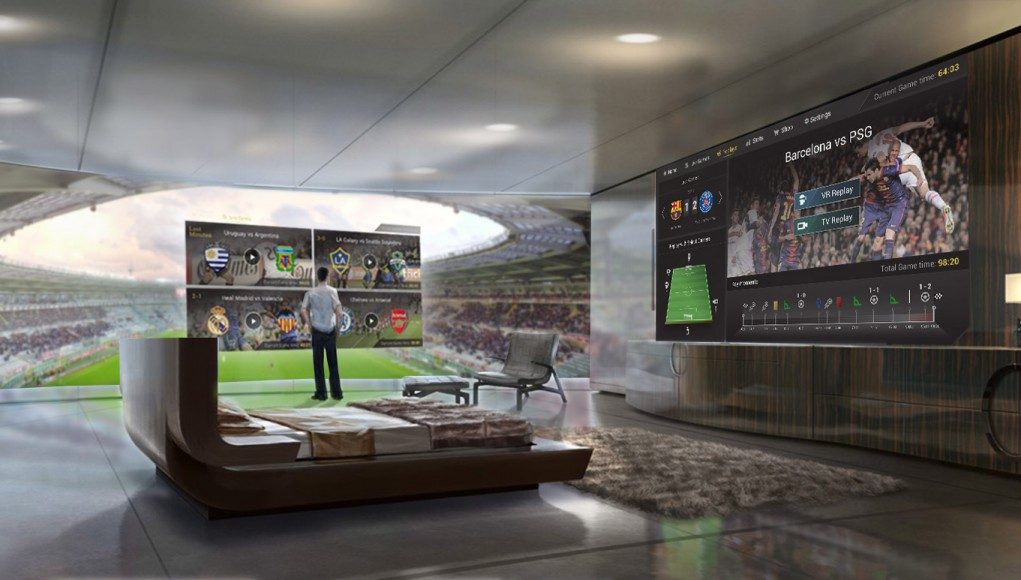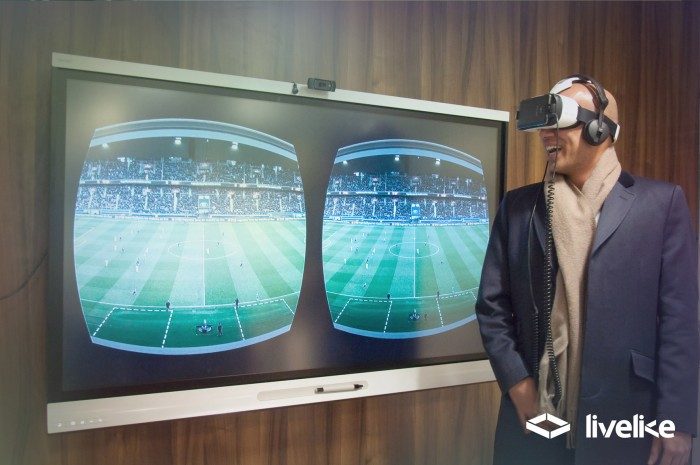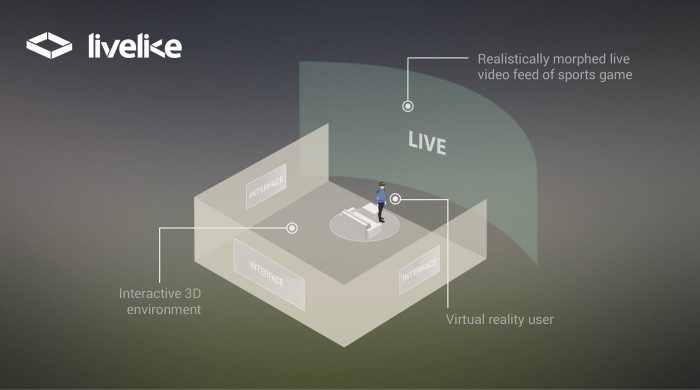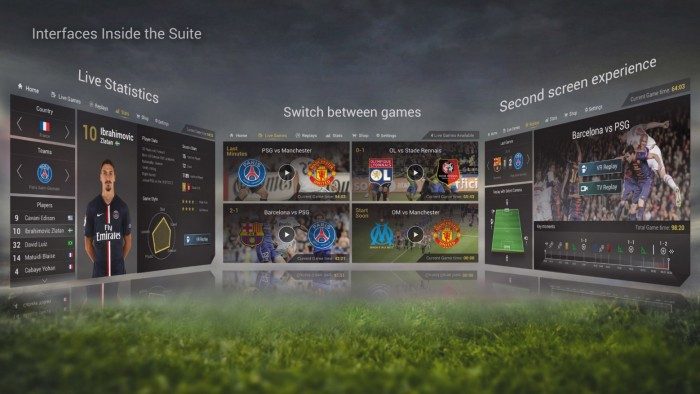While other companies are busy building 360 degree camera rigs and hoping for consumer adoption, VR startup LiveLike has a unique approach which uses existing broadcast camera tech in a surprisingly effective way to make you feel like you’re in a luxury box with friends at your favorite sporting event.
Right after gaming, VR video (360 degree recording) is the next biggest platform for VR content production. But the market is still early and has yet to prove what will be the best way to direct, record, edit, produce, and distribute VR video content.
LiveLike, on the other hand, leverages existing 2D wide angle content sourced from camera tech that is already proven and is already widely installed, specifically for watching sporting events. And although that confines the company to a sports niche, it’s one where it could thrive and play a key role in bridging the adoption gap between flat and VR video.
LiveLike, which currently runs as a prototype on Gear VR but plans to be hardware agnostic, creates a fancy virtual luxury box around the user (one could imagine how Valve’s ‘room scale’ HTC Vive tracking could appeal to this). The ceiling, floor, and walls to the left, right, and behind are all virtual. The forward wall however is missing, and in its place is an overview shot of an entire sports area—like a soccer field or hockey rink, for instance. The effect is surprisingly compelling, thanks to LiveLike warping the footage to give you the correct perspective of really being at the top of the stadium looking down at the field, watching the players scurry across it.

When I first put my head into LiveLike’s virtual luxury box, I was surprised at just how convincing it was. There’s a bit of warping as your view approaches the edge of the frame, but it really felt like I was sitting up there high above a soccer field and I could see the players far below kicking the ball about. When founder Andre Lorenceau told me that it was captured from a single GoPro, I went from surprised to astounded. The quality was mighty impressive to have been captured from that distance using a single commodity camera.
And therein lies LiveLike’s unique selling point: a system that allows broadcasters to tap into the VR market quickly without using new camera tech like multi-camera rigs which require new production processes. Lorenceau told me that on the broadcaster’s end, the setup process is as simple as installing wide angle lenses to existing cameras and sending the streams to LiveLike who will integrate them into the virtual luxury box.
But this isn’t just a way to feel like you’re sitting in the luxury box from home; LiveLike takes advantage of VR by overlaying closeup shots on top of the field—great for slow motion replays—which smartly reuses footage that’s already being captured as part of the game’s normal production. Using an interface that rests on a table within the virtual luxury box, users can even switch camera angles manually if they’d like. On the wall behind the user there’s a big virtual interface that allows the selection of various sports genres and different matches within them.
Lorenceau told me that the company intends to make LiveLike social, allowing users to experience sporting events with friends from the same virtual space. A good insight too—who goes to see a sporting event alone?
While LiveLike’s initial prototype impressed, there’s still a few unproven hurdles. For now, users are locked in one seat in the luxury suite. This keeps them aligned with the camera’s perspective. Will the illusion of being high above the field break when the player has the freedom to move about, but the camera’s position remains locked in place? Similarly, how will the perspectives of multiple players (looking out the window of the virtual luxury box from different positions) be managed from a single camera position? And while non-stereo footage looked fine high above a soccer stadium, will the effect be as convincing in a tennis match where you’re closer to the players and the effect of stereoscopy is more pronounced?
Lorenceau told me that these are areas where the company is soon to experiment. We’ll be following along closely to hear what they learn and bring you more as LiveLike continues development of this unique platform.










